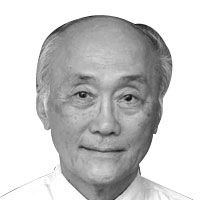Great hope for the graduates of the future – Big business stirs up private colleges and universities

In last week’s discussion, I left the depressing assessment of the poor quality of our private tertiary education output.
Today, I move on to the good and hopeful news. New investments and new managements are shaking up tertiary educational institutions. Big business has discovered the future of education.
“Business tycoons invest in private colleges and universities.†A notable development in recent times is the entry of successful men of business in the private tertiary educational sector.
This has taken two forms. One is through donations, scholarships and institutional grants. The other major development involves direct investment in tertiary education. I comment on direct investments of big business in education, leaving the field of grants and donations in the future.
The foray of big business into the field of tertiary education implies the entry of business management principles in the educational sector. It further signals the potential for convergence of the output of professionals toward the needs of industry.
“The nation’s early educational enterprises.†From their early origins, the private schools and colleges were founded by professional academics to provide education, just as hospitals and large clinics were set up by doctors to cure the sick. There was also the mundane objective of providing income for the founders and their families.
Through the years, some of these academic institutions expanded. Essentially operating in a free market within a minimum of regulatory guidelines, they grew as schools and colleges and increased their enrolments. Some grew in scale from small colleges to big universities.
Changing times to the present have brought in new problems. New investment infusion was needed. But far more than that, strong management and cost controls were needed, and this was a capacity missing among these institutions.
The schools faced continuing challenges that required them to adopt, reform, and change. Among these demands were the improvement of the quality of instruction and output and the pressure of hard times (both among and within households and in the nation).
Public demands to hold back tuition fee increases were among these constraining factors. And then, there was the force of competition among the establishments within the industry.
“Business acquisitions of tertiary educational institutions.†Big business tycoons had surplus financial resources to invest in education. Initially, romantic motivations about education and giving back to society part of their success might have initially played a role in their actions.
But once they began to infuse investment money, they also brought in better business managers. Not all of these experiments will bring automatic improvements of the offerings of these universities.
However, an improvement of facilities and of instruction is likely to come out from better management of the institutions and the infusion of more investments.
Lucio Tan. The University of the East was the biggest of the private universities founded after independence. Its early success in its commerce offerings made it the biggest private university in the country.
But early success led to unstable relations among its investors, and during the 1980s, it suffered a prolonged financial crisis that led to its sale to a well-funded foreign religious cult group, This change, however, brought in more instability.
Lucio Tan acquired the university in 1990 and brought to it stable management. This was the first major acquisition of a large university by a big businessman. It has brought the university steady progress and financial stabilization.
Alfonso Yuchengco. The Mapua Institute of Technology, the country’s foremost private engineering school, was eventually acquired for control by Alfonso Yuchengco, a successful banker, industrialist and financier. (Yuchengco has also ventured into investing in a new collegiate institution (Malayan College) in Cavite as well as into a special high school based on science and math.)
Mapua’s engineering standards have risen with the international accreditation of its engineering programs, the first in the country.
Emilio Yap. The majority control of Centro Escolar University, one of the oldest universities in the country, was acquired by an investor group led by Emilio Yap in 2002. Yap is a businessman who controls the Manila Bulletin and the Manila Hotel.
Eusebio Tanco, the information technology educational entrepreneur, saw opportunities in education in the digital age. STI (Systems Technologies Institute) became a success as an information technology (IT) school. To date it has a network of more than 70 tertiary schools on IT learning.
Now, STI set up a holding company for other school investments. Recently, STI acquired a 40 percent interest in the Philippine Women’s University (PWU). This has set up an investment bridgehead in one of the country’s big Manila universities. STI also acquired controlling interest in the North Negros College in the Visayas.
STI’s network of educational institutions is likely to strengthen and broaden the digital aspects of education ventures in the country.
Henry Sy of the SM business empire has invested big in tertiary education. Initially, he helped to found an IT college in partnership with IBM. This became the Asia Pacific College.
As his empire grew further, he bought a significant minority share of Far Eastern University, one of the country’s major private universities which is controlled by the Reyes-Montinola family. No doubt, Henry Sy’s participation in the FEU board has helped to strengthen that university’s overall programs. In addition, a new FEU tech school has been set up, with a new 17-story building being constructed for its new premises – a short walk from the old FEU campus.
Most recently, Henry Sy bought controlling shares of the National University, another one of the oldest private universities in the country. This investment has underwritten expansion of the NU facilities with a new eight-story building.
Ramon del Rosario, Jr. expanded the investments of PHINMA, the large management holding company founded by his father. PHINMA’s approach is to acquire regional universities and colleges and to provide them a management network.
To date, PHINMA has acquired four regional colleges in Mindanao (Cagayan de Oro College), Visayas (University of Iloilo) and in Luzon (University of Pangasinan and Araullo University). The business model of this investment is based on profitable opportunities in private education through a regional system management.
The right approach toward generating successful outcomes is based on the idea that economies of scale can be achieved in grouping institutions of learning even though they are geographically separated.
(To be continued.)
My email is: [email protected]. Visit this site for more information, feedback and commentary: http://econ.upd.edu.ph/gpsicat/
- Latest
- Trending





























